I love, like really love, teaching the Bill of Rights. Our 5th grade study of the Bill of Rights leads to the most amazing, thought-provoking discussions and debates.
First, it’s important to point out that I teach the Constitution thoroughly before introducing the Bill of Rights. If you would like to read my blog post on Teaching the Constitution in Upper Elementary, click the link.
When starting our Bill of Rights study, I ask students if they can imagine the Constitution existing without a Bill of Rights. At first, they usually say the Constitution would be fine without the addition of the Bill of Rights.
I get out my marker and jot down a few of their rights on the board and then cross them out one at a time. Students are surprised to see that the rights they enjoy daily would not exist without the Bill of Rights.
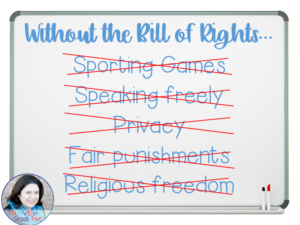
Students must understand that some states refused to ratify (approve) the Constitution until individual freedoms and liberties were protected, so the Bill of Rights is absolutely crucial to our nation’s success.
At this point, I introduce the first ten Amendments to the Constitution, known as the Bill of Rights. We discuss each Amendment one at a time and take notes in our interactive notebook. Here’s how it looks:
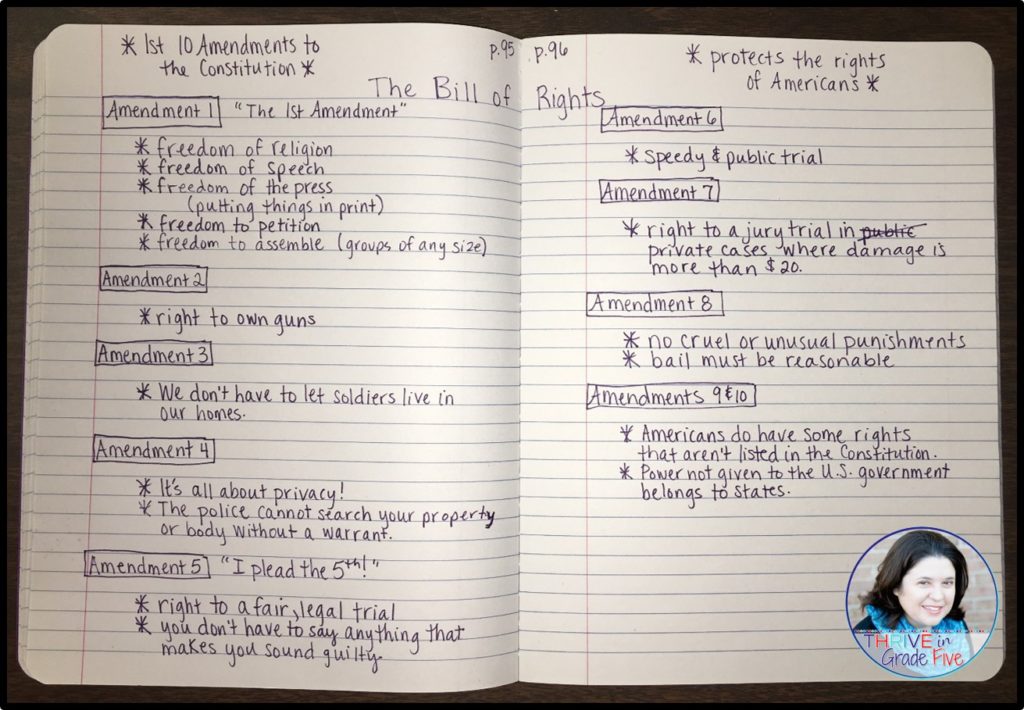
I simplify the wording on each Amendment so that students are able to fully understand the meaning of each right.
As you already know, students learn best when we make material applicable to their lives. This is especially true when teaching about something as important and complex as the Bill of Rights.
The best method I’ve found to make the Bill of Rights applicable to students’ lives is through the study of current events, real-life scenarios, and critical thinking.
Using Current Events
We live in an information-rich world. You literally can’t go ten minutes without a news story floating across whatever screen you are using that touches the Bill of Rights in some way.
Here’s an example of a current event I used recently in my classroom to teach the Bill of Rights:
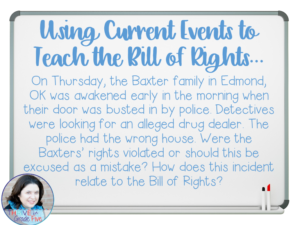
Go to your local news page and look for a couple of news stories that relate to the Bill of Rights in some way. Read one story at a time to students and ask them to discuss the story and whether rights were respected or not. Then, ask students to write a ½ page summary of their opinion and how the news story relates to the Bill of Rights.
The debates between students are so fun to hear! They really get into this and try to share their opinions as clearly as possible.
Caution: Don’t use any volatile or sensitive stories, especially ones that involve injury or murder. It’s just too painful and may cause trauma triggers for students.
Using Real-Life Scenarios
I enjoy using scenarios in my classroom. These are stories that can be controlled and bring excellent discussion and debate to the classroom.
I find that students understand their rights much more thoroughly when they dive deep into scenarios and employ their critical thinking skills to decide if a person’s rights were violated or not.
This is one of my very favorite scenarios to use (but don’t worry, I have many more to share with you). This law is in effect in my state now, so students already somewhat have opinions about this issue.
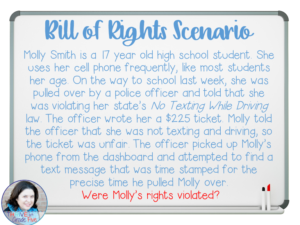
Students become passionate about their opinions. Learning about the Bill of Rights often extends beyond the classroom because students are so very excited about what they’re learning. I definitely encourage students to use the same scenarios and ask their parents to share opinions.
I recommend rewriting the Bill of Rights into modern language for your students. Use the page below as a guide.
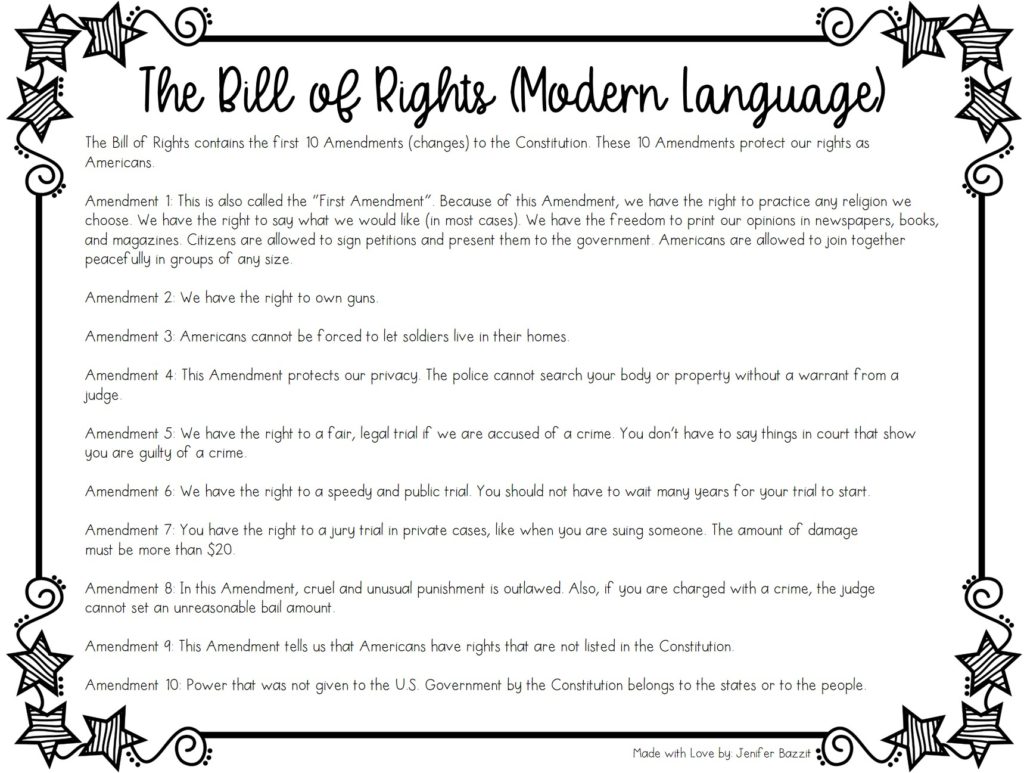
I created a Bill of Rights Detective Notebook in which I provide ten real-life scenarios and ask students to decide which Amendment relates to each scenario and whether individual rights were respected.
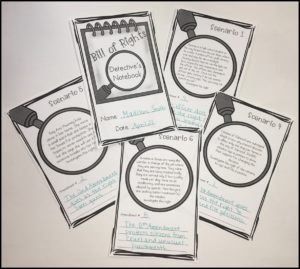
Thinking About the Bill of Rights Critically
Once students fully understand the Bill of Rights, I like to expand their critical thinking skills with an extension activity.
The activity is outer space-themed and involves aliens, so it’s pretty fun. Students are told that aliens have come to the United States and admire all of the rights that Americans have.
The aliens said that their leader will allow them to include only five rights in their planet’s new Bill of Rights. Students have to put the rights in order of importance.
Once students try to prioritize their rights and decide which ones are more or less important, they discover that it’s really, really hard to say that they could forfeit one of their rights.
After students prioritize their lists, I ask which rights were not important. Surprisingly, students usually choose freedom of assembly as a less important right. I point out that there will be no more sporting events, movies theaters, or amusement parks because citizens are no longer allowed to gather in large groups.
After pointing out the things they’ll lose, students want to revise their lists. It’s truly painful to imagine giving up any of our rights.
If you’re interested, you can check out this resource here: Bill of Rights – How Important Are Our Rights?
I’m thrilled to offer these free Constitution practice pages (including the Bill of Rights). Just enter your first name and email address below and the pdf file will be sent to you immediately.
I highly recommend this Constitution bundle. This resource has everything you need to teach all aspects of the Constitution.








